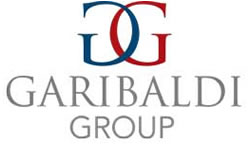In this second article on AIRA Standards, the author discusses unique issues valuing distressed companies. These include the standard of value used, the premise of value, the intended use of the valuation, and cost of capital. The author also discusses the use and level of acceptance of the Industry Risk Premium (IRP) in the bankruptcy/reorganization context. In 2004, The Association of Insolvency & Restructuring Advisors (AIRA) launched the Certification in Distressed Business Valuation (CDBV). The AIRA Board approved Standards for Distressed Business Valuation to improve the consistency and quality of practice among its members and the standards became effective March 1, 2014
In 2004,
the Association of Insolvency and Restructuring Advisors (AIRA) launched the Certification in Distressed Business Valuation (CDBV). Before the CDBV program, there was no specific professional designation that recognized the unique considerations facing valuation analysts concerned with valuations of distressed businesses or testifying in bankruptcy court.
Effective March 1, 2014, the AIRA issued new standards for Distressed Business Valuations (AIRA Standards) to be followed by AIRA members when performing engagements to estimate value that culminate in the expression of an opinion and/or conclusion of value in matters involving business turnarounds, restructuring, bankruptcy, and/or insolvency.
The purpose of this article is to point out some of the unique issues regarding valuations of distressed businesses relating to engagement development, steps in the business valuation engagement, and generally accepted valuation approaches. This article is focused primarily to unique issues that are discussed in or suggested by the new AIRA Standards.
Distressed businesses have financial, operational, legal, regulatory, and other unique stresses that impact the value of the business. The AIRA Standards note that “traditional valuation methods may require significant adjustments to reflect the unique financial or operating situation of a firm in distress, the legal context of the valuation and the intended purpose of the valuation.”
The AIRA Standards consider the following unique business valuation engagement development issues[1]:
Because “valuation analysis is central to almost every part of the turnaround, workout and bankruptcy process,” it is important to understand the specific intended use of the business valuation at a specific point in the restructuring, workout and/or bankruptcy process.
The valuation analyst should “assess the symptoms of business problems to determine the underlying cause(s) and their impact on financial results.” The cause(s) of the financial, operational, legal, regulatory and/or other unique distress should be considered and taken into account in the context of the distressed business valuation engagement.
Subsequent events may be unique in distressed business valuation engagements, affecting what was and was not “known or knowable” about the cash flows of the distressed business at the valuation date.
The AIRA Standards consider the following unique business valuation issues[2]:
The “Premise of Value” in a distressed business valuation may be legally mandated or otherwise determined by the user of the valuation.
The distressed business might not be assumed to be continuing as a going concern. The future reorganized entity may not have all the income-generating characteristics of a normal business enterprise. The valuation may need to take into account the orderly or forced liquidation of some or all of the enterprise.
Courts and/or stakeholders in a distressed business valuation engagement may have unique standards of value that impact the usual consideration of fair market value, fair value, investment value, or net realizable value.
The AIRA Standards note that “Fair Value” is not defined by the U.S. Bankruptcy Code. Fair Value is often interpreted by U.S. Bankruptcy Case Law as “Fair Market Value” and Bankruptcy Courts are often concerned with “reasonably equivalent value” and “present fair salable value.” The AIRA Standards caution the valuation analyst to consult with legal counsel regarding the interpretation of these terms for the unique jurisdiction and venue involved.[3]
A unique issue in distressed business valuations is the applicability, consistency, availability, and/or integrity of the available financial information of the subject company and suitable guideline companies. Historical and prospective financial information may have inconsistent, distressed, and non-distressed component elements.
The valuation analyst should obtain applicable and available financial information that will allow relevant and reliable comparative financial analysis. Care should be taken regarding income tax information due to the unique income tax issues relating to net operating losses carried forward and cancellation of debt in a restructuring.
The valuation analyst should devote significant time, attention and professional judgment to the impact of bankruptcy or restructuring on cash flows as well as the impact of asset acquisition or divestures during the reorganization process. Care should be taken regarding contracts, as companies going through a Chapter 11 restructuring may have specific unique rights and obligations regarding advantageous or disadvantageous contracts.
The AIRA Standards note that when using a Discounted Cash Flow Method, the valuation analyst should consider[4]:
Forecast/projection assumptions versus perpetuity assumptions regarding stable sustainable results plus growth.
Forecast/projected earnings or cash flows versus perpetuity assumptions regarding stable sustainable results plus growth.
Changes in working capital, capital expenditures, taxes, and other items affecting cash flows during the forecast/projection period versus perpetuity assumptions.
Terminal value and its method of computation (i.e. use of exit multiples) versus the Gordon Growth Model and the growth assumptions into perpetuity.
The AIRA Standards provide specific considerations in this regard including[5]:
Selecting an industry-based cost of debt versus actual current cost of debt or future restructured cost of debt.
Selecting an industry based cost of equity versus a risk adjusted cost of equity (either current or in the future forecast).
Selecting an industry based optimal capital structure versus actual capital structure, either current or in the future forecast or varying the discount rates and capital structure over time or into perpetuity.
Evaluating the restructuring risk.
Evaluating the relevance of benchmarking.
Determining the impact of taxes on cash flows and matching those cash flows to the appropriate capitalization or discount rate.
Evaluating access to capital markets.
Considering specific company risk.
The
author submits that the assessment and/or determination of specific company risk (and associated risk premium) within the context of a distressed business valuation is additionally complicated by the nature, timing, and extent of the debtor company’s distress and/or its involvement in actual, pending, or threatened litigation. The stage of distress, reorganization, and/or restructuring is a specific additional consideration in determining the specific company risk (and associated risk premium).
The author submits that despite the widespread use by business valuation analysts of a specific company risk premium in a “build-up” or “capital asset pricing model” – and notwithstanding the appropriate cautionary statements in the AIRA Standards – there remains limited academic research on quantification of specific company risk premiums, which generally remains in the realm of the financial analyst’s judgment. If this is complicated and true for average, “run-of-the-mill” companies, how much more so is it complicated and true for distressed, reorganizing, or reorganized debtor companies?
* * * * *
[1] Association of Insolvency & Restructuring Advisors: Standards for Distressed Business Valuation, Page 19, Paragraph 39.
[2] Association of Insolvency & Restructuring Advisors: Standards for Distressed Business
Valuation, Page 23, Paragraph 52.
[3] Association of Insolvency & Restructuring Advisors: Standards for Distressed Business Valuation, Page 25, Paragraph 54, Part A.
[4] Association of Insolvency & Restructuring Advisors: Standards for Distressed Business Valuation, Page 31, Paragraph 67, Part a, Section ii.
[5] Association of Insolvency & Restructuring Advisors: Standards for Distressed Business Valuation, Page 33, Paragraph 67, Section v, Sub-section a through k.
Michael D. Pakter CPA, CFF, CGMA, CFE, CVA, MAFF, CA, CIRA, CDBV, has more than 40 years of experience in accounting and forensic accounting, business economics and investigations in numerous industries and diverse engagements, including more than 20 years of experience in economic damages and business valuations. He has submitted expert reports in several jurisdictions and testified in arbitrations, regulatory proceedings and litigated disputes. State, Federal and Bankruptcy Courts, as well as arbitral bodies, have recognized him as an expert in accounting, financial analysis, forensic accounting, economic damages, business valuation and business economics.
©Copyright - All Rights Reserved
DO NOT REPRODUCE WITHOUT WRITTEN PERMISSION BY AUTHOR.











